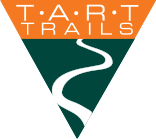Vasa Grooming FAQs
How often do you groom? It depends on the amount of new snow, air and snow temperatures, amount of skier use, and the depth and quality of the base. We try to groom a minimum of four times a week when conditions permit; however, when we receive consistent new snow we will groom as often as necessary. More experienced skiers tend to like hard fast conditions, less experienced skiers prefer to have slower softer conditions, and classic skiers want firm hard tracks. The groomers try to provide the best possible compromise so that everyone using the trail has an enjoyable experience
What time of day do you groom? Usually in the early morning. Having grooming equipment on the trail at the same time as skiers leads to safety concerns. We also like the trail to have a chance to set up before the skiers begin using it
How long does it take for the trail to set up after grooming? Generally it takes from two to four hours but ultimately depends on weather and temperature conditions.
Why don’t you set classic tracks during every groom? The answer is once we have established an adequate base we reset the tracks as often as possible. In order to set good tracks the base must be loosened up to the depth of the tracks. In conditions where we have not received new snow in awhile and the base has become hard packed it is difficult or impossible to loosen deep enough. In this case we leave the existing tracks and renovate the skate lane only deep enough to remove most marks in the base. Each time we grind the base it changes the characteristics of the snow and eventually the snow will become so hard packed that this grinding will only break it up into chunks. Skiing on these chunks is something most skiers prefer not to do. Idea conditions to set tracks would be after a 2 to 4 inch snowfall or on snow that is still more or less in its natural state and has not thawed and refrozen. While, as groomers, we would prefer to reset classic tracks during every groom we must deal with what Mother Nature gives us and try to provide the best possible conditions even though it may involve some compromising.
How long does it take to groom the Vasa Pathway? A normal groom will take at least five to six hours. Removing debris, repairing damage, and the need for additional initial passes to pack significant new snow may increase this time. It is not uncommon for groomers to spend 8-12 hours on the trail.
What equipment do you use? Learn more about the equipment here. The groomers make the decision on what to use after they arrive at the trailhead and evaluate the existing trail conditions.
Who maintains the grooming equipment? Whenever possible the groomers maintain and modify the equipment. Equipment dealers or specialized repair facilities handle serious repairs to the LMC or snowmobiles when necessary. Approximately one hour of equipment maintenance is required for every four hours spent grooming. This does not include the trail preparation work that is done in the summer and fall to prepare the trail for the winter season.
What causes damage to groomed trails? Footprints – whether they are from dog paws, snowshoes or feet. Dog owners, snowshoers, and hikers should use the multi-use Meadows Loop or snowshoe trails. Skiing on the trails when they are wet, soft and/or during rain. Big groups of skiers making abrupt turns and stops without filling in holes. Skiers who make unnecessary and radical moves; e.g., hockey stops. Dog waste – please pick up after your pets.
Why is the LMC not used on every groom? The LMC cannot be used in early season conditions when the hard packed base is less than 3 to 4 inches without bringing up dirt and introducing it into the base. Once the dirt is introduced it will continue to be an issue for skiers and groomers during the entire season. We must wait until the base is sufficient over the entire Vasa Pathway system. In early season we monitor the base at several spots along the trail to determine when it is deep enough to bring the LMC out.Once the base is sufficient the LMC is used whenever the conditions are favorable during the season. When the LMC is used the entire width of the trail surface must be tilled deep enough to set classic tracks. Tilling changes the characteristics of the snow and repeated tilling of the same snow is detrimental to ski conditions. When we receive fresh snow we can mix the new snow with the existing base to help revitalize the trail surface. Tilling the base without the benefit of new snow will eventually break down the base. This will make it more susceptible to melting which will diminish the overall thickness of the base over time and will shorten the ski season. By using the snowmobiles with the Ginzu and Tidd Tech we can create a decent ski surface and prolong the life of the ski surface. The Ginzu and Tidd Tech have a less aggressive action on the snow by cutting the surface with blades. This action does not alter the snow crystals as much as using the tiller on the LMC. The Tidd Tech and Ginzu are narrow enough that the skate lane can be renovated without affecting the existing classic tracks.The groomers determine what equipment should be used based on the current weather, weather forecast, amount of new snow, and probably most importantly their experience and knowledge of the kind of result each piece of grooming equipment is capable of producing. Fortunately, TART Trails has provided their groomers with an excellent selection of equipment from which to choose. For information on this equipment click here.

